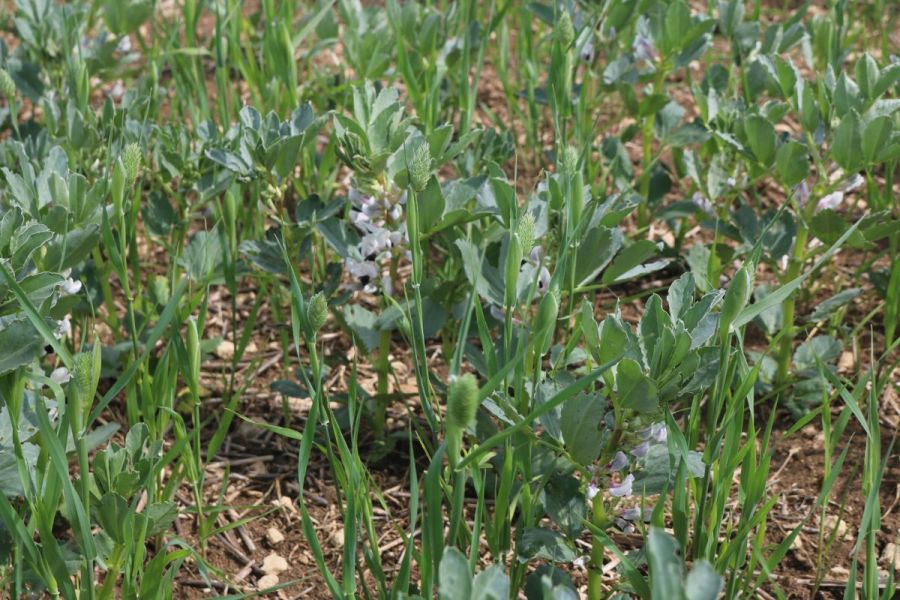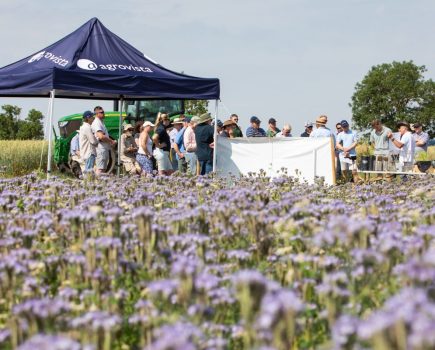Fresh trials from Agrii under the NCS banner point to a 25% reduction in nitrogen fertiliser use after winter beans – without compromising yield
A fresh round of nitrogen trials is helping to sharpen strategies for wheat growers looking to trim fertiliser inputs without sacrificing output – and pulses are at the heart of it.
Field trials led by Agrii as part of the NCS project are highlighting the potential for a 25% cut in nitrogen fertiliser rates in winter wheat crops following winter beans. Crucially, the results suggest little to no yield penalty when nitrogen is reduced from RB209-recommended rates.
“We’ve long known about the benefits of pulses in the rotation, but we’re now starting to quantify just how much nitrogen they can leave behind,” explains Lucy Cottingham, trials and agronomy specialist at Agrii.
During the 2023/24 season, Agrii ran small-plot nitrogen trials at Cornish Hall End in Essex and Sharnbrook in Bedfordshire. Both sites – characterised by medium to heavy soils – provided a strong foundation to explore different nitrogen rates and split application timings.
Starting from the RB209 benchmark of 190kgN/ha for wheat following beans, Agrii compared rates of 125% (238kgN/ha), 75% (142kgN/ha), and 50% (96kgN/ha). Two- and three-split nitrogen regimes were also tested, with the latter including an early application around growth stage 25.
“The idea was to see how low we could go without losing performance,” says Lucy. “Soil mineral nitrogen tests taken in autumn and again in February helped us to understand what was already available, especially at depth.”
At the Essex site, plots receiving 142kgN/ha yielded 9.42t/ha – almost indistinguishable from the 9.48t/ ha recorded from the 190kgN/ha treatment. This 25% cut equated to a notable reduction in carbon emissions, dropping from 646kg CO₂e/ha to 482.8kg CO₂e/ha.
The three-split nitrogen regime also consistently outperformed the two[1]split approach, delivering an extra 0.3t/ha in yield. “That early nitrogen dose may have helped build biomass at a critical stage, particularly given the wet winter which likely washed out some residual N,” adds Lucy.
Tools like PlentySense nitrate sensors and drone imagery were also used to track crop nitrogen dynamics throughout the season. While full conclusions are still pending, Lucy believes such technologies could become valuable aids in tailoring applications more precisely.
Not only did the reduced nitrogen rate deliver comparable yields, but it also generated stronger gross margins, she says. “We found that the 142kgN/ha with a three-split strategy offered the best return on investment across both sites.”
The Bedfordshire trials followed a similar pattern. Here, 142kgN/ha produced 7.88t/ha compared with 7.95t/ha with the full RB209 rate. Crucially, a number of plots still reached the 13% protein threshold required for milling premiums – further supporting the case for reduced inputs.
With ear counts largely consistent across treatments, it was grain protein and nitrogen levels that responded most strongly to increased fertiliser – although this came at a higher environmental cost, notes Lucy.
She says the message is clear: “There’s a compelling argument for reducing nitrogen by 25% in wheat following beans, particularly on heavier soils. The yield is there, the margins are better, and the environmental benefit is significant.”
As more data rolls in from the wider NCS project, growers may soon find they have the tools – and the trial evidence – to back bold nitrogen decisions in pulse-rich rotations…
This article was taken from the latest issue of CPM. For more articles like this, subscribe here.
Sign up for Crop Production Magazine’s FREE e-newsletter here.




